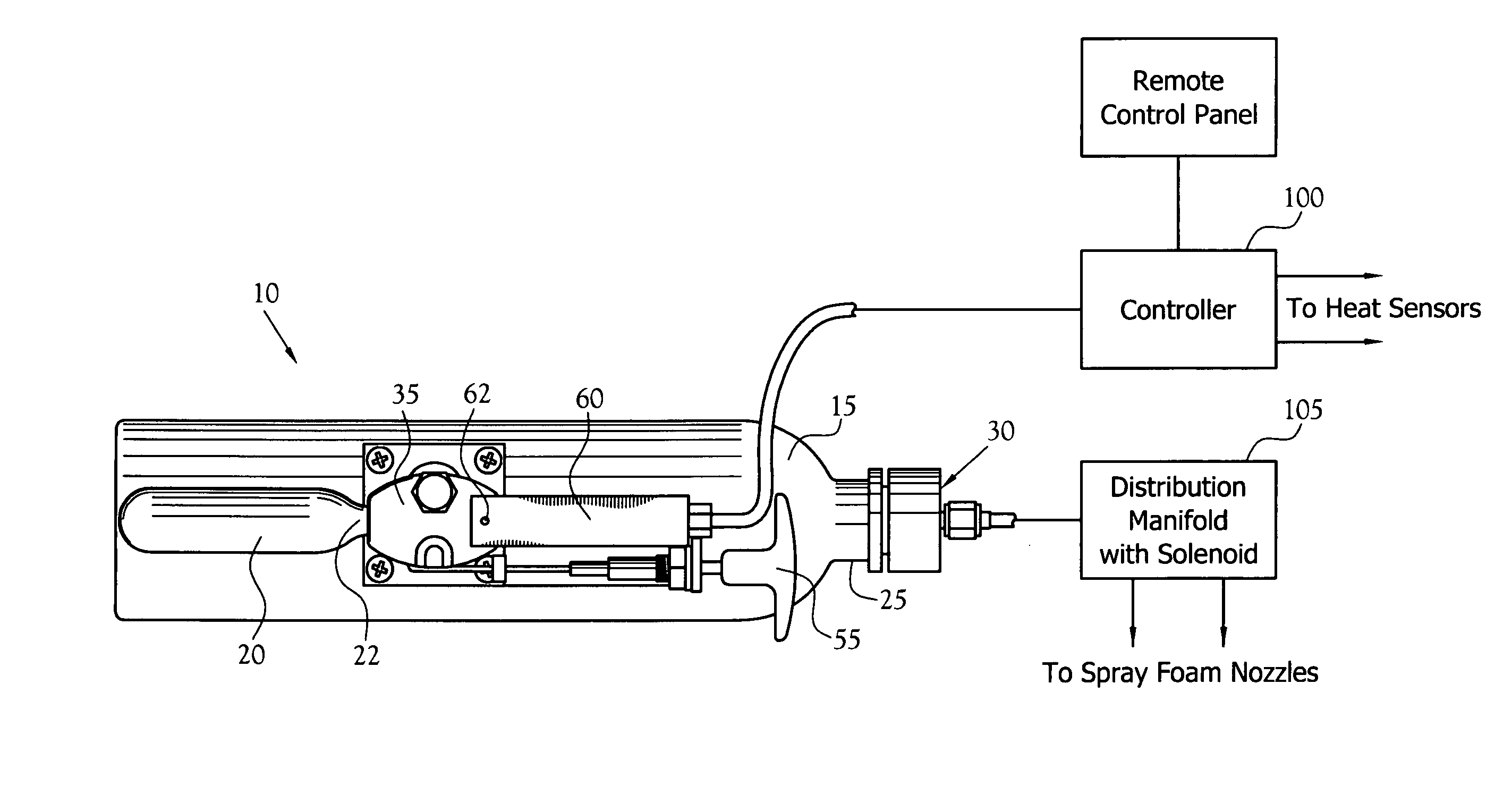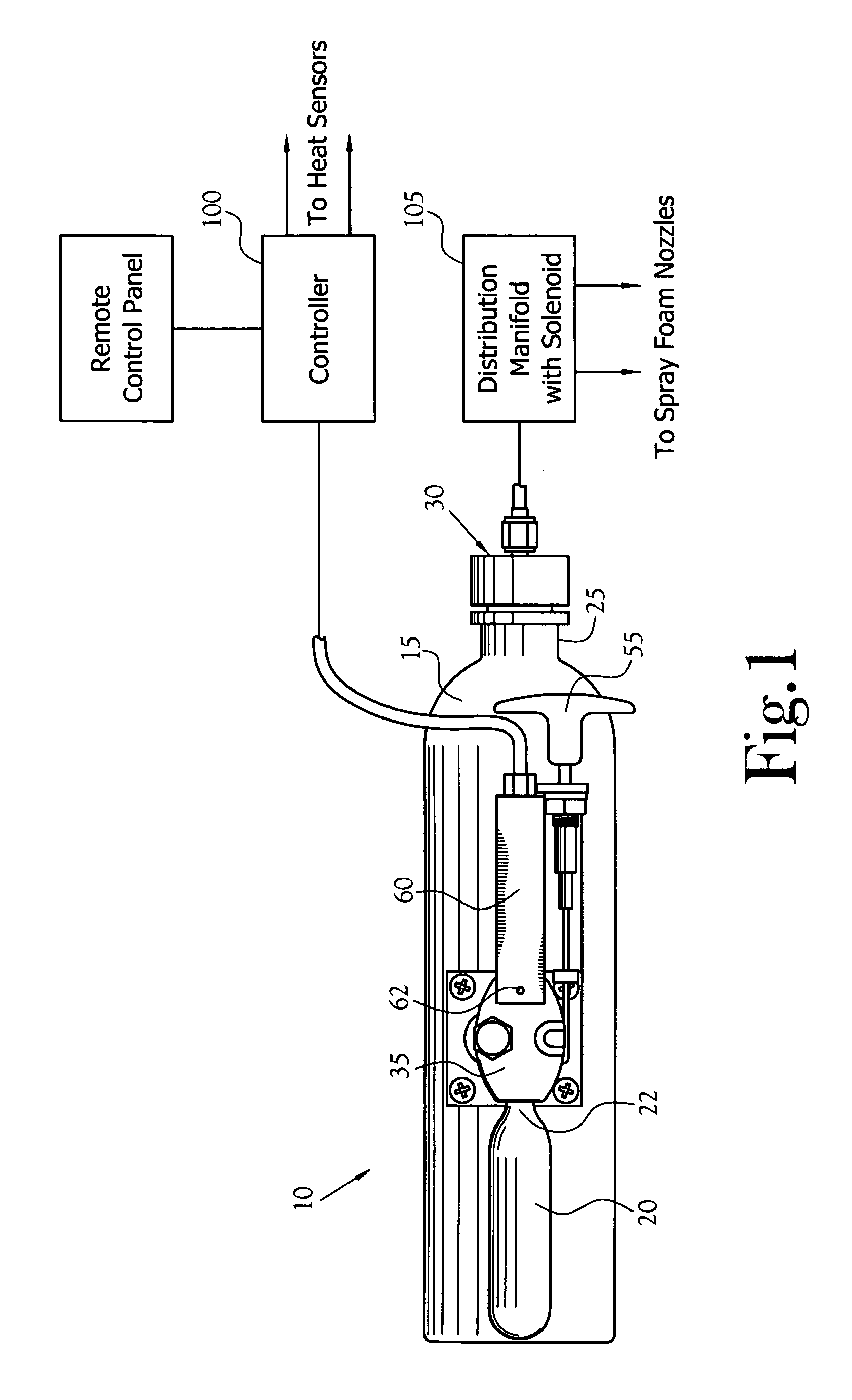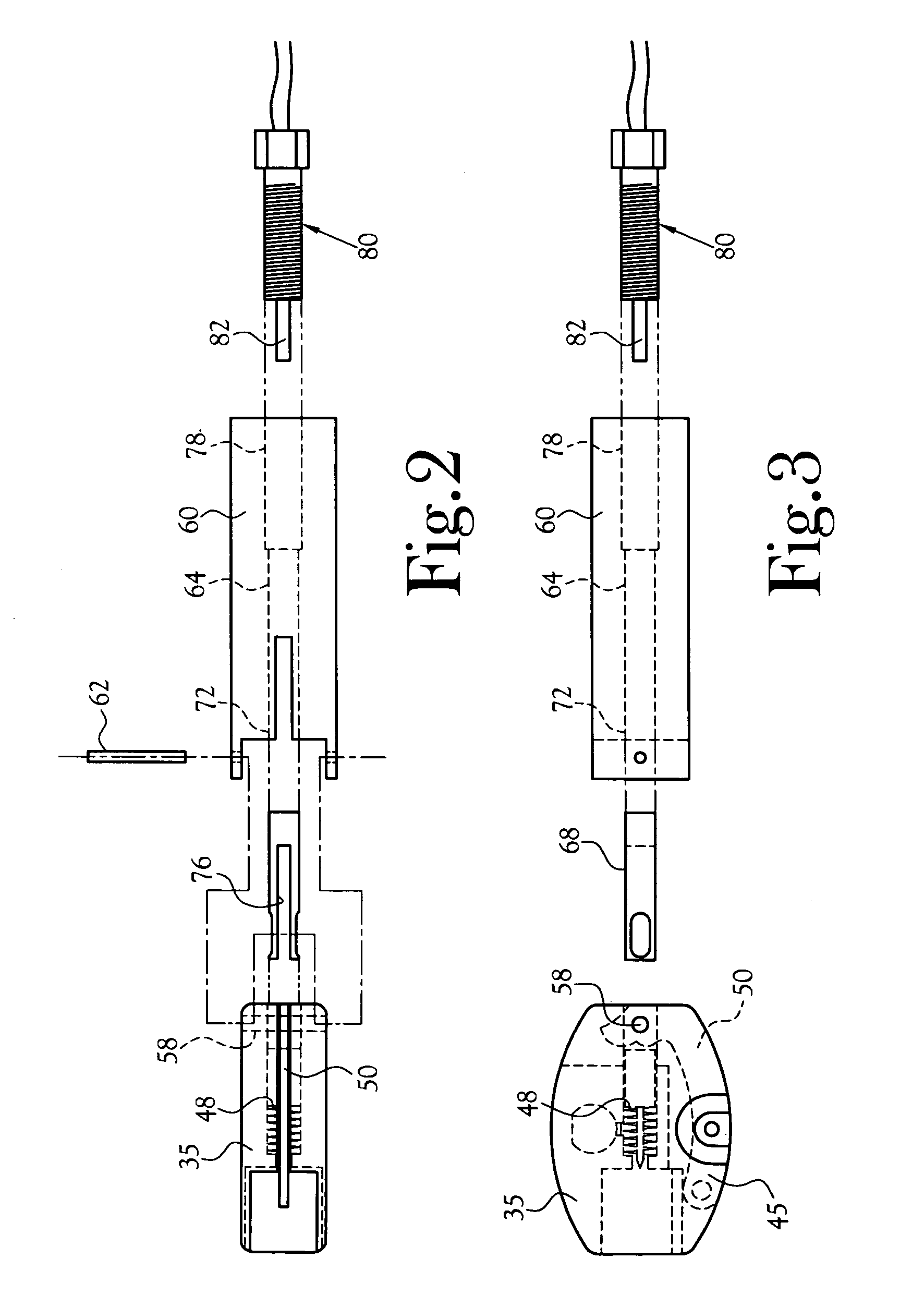Fire suppression system
a fire suppression system and fire suppression technology, applied in fire extinguishers, fire rescue, earthwork drilling and mining, etc., can solve the problems of not revealing an automatic actuation system, no device discloses an electrical and manual actuation system of fire suppression system,
- Summary
- Abstract
- Description
- Claims
- Application Information
AI Technical Summary
Benefits of technology
Problems solved by technology
Method used
Image
Examples
Embodiment Construction
[0025]An improved fire suppression system, constructed in accordance with the present invention is illustrated generally as 10 in the figures. As stated above, the present invention is an improvement to the fire suppression system disclosed in the '635 patent. The improved fire suppression system includes a first canister 15 containing a fire suppressing agent. The first canister 15 includes an inlet (not shown) in fluid communication with a second canister 20 containing an agitating and pressurizing agent. The first canister also includes an outlet 25 defining a neck for receiving a discharge mechanism 30. In one embodiment, the second canister 20 is a CO2 cylinder, as is commonly used with CO2 energized projectile firing guns, having an outlet 22 with a pierceable seal (not shown) disposed about the outlet 25. The second canister 20 is received by an actuating mechanism 35 for establishing a fluid communication between the first canister 15 and the second canister 20. The actuatin...
PUM
 Login to View More
Login to View More Abstract
Description
Claims
Application Information
 Login to View More
Login to View More - R&D
- Intellectual Property
- Life Sciences
- Materials
- Tech Scout
- Unparalleled Data Quality
- Higher Quality Content
- 60% Fewer Hallucinations
Browse by: Latest US Patents, China's latest patents, Technical Efficacy Thesaurus, Application Domain, Technology Topic, Popular Technical Reports.
© 2025 PatSnap. All rights reserved.Legal|Privacy policy|Modern Slavery Act Transparency Statement|Sitemap|About US| Contact US: help@patsnap.com



